Learn the Symptoms, Types & Treatments for Canine Anxiety
Does your dog often keep their tail tucked between their legs and struggle to relax? Do they tend to avoid making eye contact and tend to hide or retreat to another room? You may be wondering "Does my dog have anxiety?" The answer is likely YES.
The next question on your mind is probably, "Okay, so how do I help my dog not be so anxious?" That answer is a bit more complicated. It’s important to determine the cause of your dog’s anxiety to best help them. You've already taken an important step by coming here to learn more.
Signs & Symptoms of Canine Anxiety
Aside from the obvious signs of a tucked tail, fidgeting, avoiding eye contact, and hiding, symptoms of anxiety may also include:
- Spontaneous elimination in the house (peeing or pooping)
- Destructive behavior
- Panting
- Pacing
- Whining/whimpering
- Passive escape
- Trembling
- Excessive licking
- Dilated pupils
- Avoiding interactions
- Displacement behaviors: yawning, lip licking, air sniffing, “shaking it off” like a wet dog
It's common for dogs to show signs of anxiety occasionally, especially when they're in an uncomfortable situation. But if your dog has multiple symptoms at once, extreme versions of any symptom, or is constantly anxious, it's a problem that should be addressed.
Types of Dog Anxiety
Did you know that there are several distinctly different types of anxiety that dogs experience? Understanding each of these specific types (separation anxiety, former rescue (or shelter) dog anxiety, illness-induced anxiety, or general anxiety) is key to figuring out the best ways you can help ease your pup's stress.
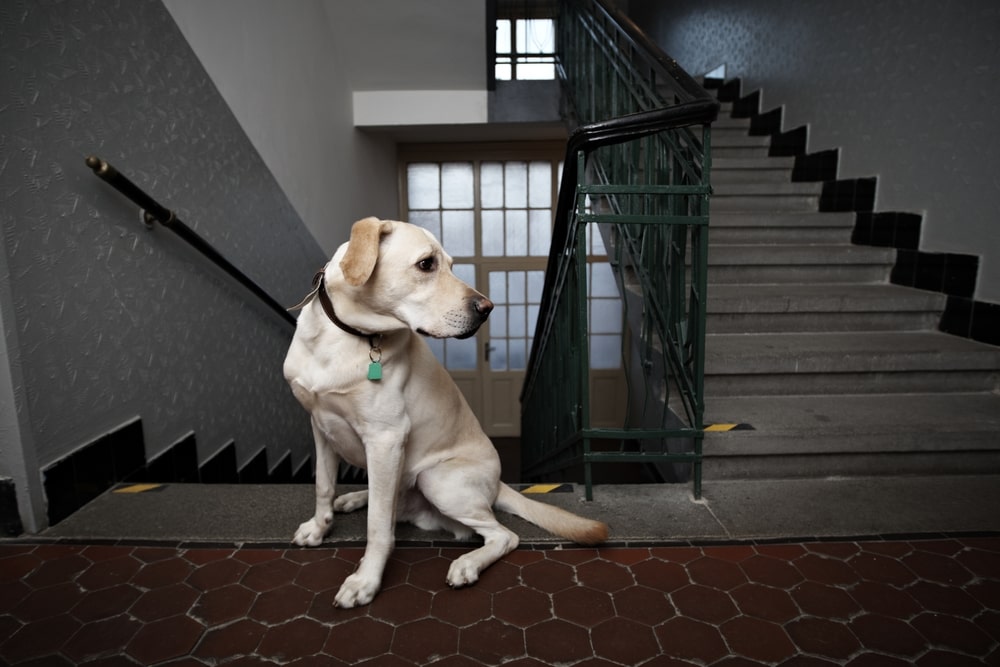
Separation Anxiety
Even before the pandemic, this type of dog anxiety was a pretty common occurrence. Very few dogs LIKE being left alone -- they are social animals by nature. Anxiety in this case is most often caused by boredom and loneliness, perhaps associated with a previous negative experience while left alone.
Common Signs
Though not all dogs hate being alone, see if you recognize some of these common signs that indicate your dog suffers from separation anxiety when they are away from you:
- destructive behaviors: destroying furniture, scratching or chewing marks on windows or doors
- neighbors complaining of excessive barking, whining, or howling
- pottying in the house
Ways to Relieve pet anxiety
Many dogs will greatly benefit from a walk before you leave, stuffed treat toys to keep them busy and vent their need for destructive behavior, or television (or radio) left on to keep them company. Another way to help relieve the stress of your leaving is to not make a big deal about coming and going or try using one of these proven ways to help a dog with anxiety.
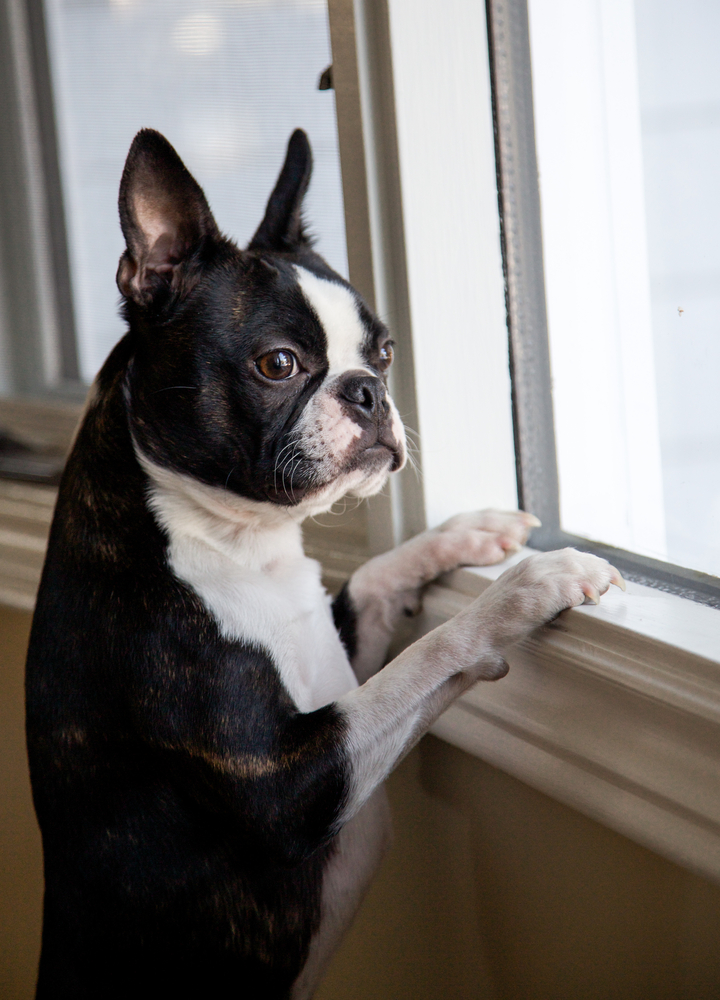
Products to Help Your Dog Cope
- Dog TV DogTV is a subscription-based streaming service designed to help calm dogs dealing with loneliness. With programming specially tailored for the canine audience, DogTV is an ideal option for pet parents who may be away from home for some time.
- PetCube PetCube is a two-way interactive video camera that allows dog owners to check in on their pups from anywhere. You can even talk to your pet and send them treats with the PetCube app.
- Outward Hound Offering a wide variety of puzzle toys, Outward Hound is an excellent resource for keeping your pup entertained when you’re away.
- Kong A classic for keeping a doggo entertained, Kong is a great way to help your pup focus on digging out treats rather than waiting not-so-patiently for your return.
- Snuggle Puppy Your doggo can cuddle up to the Snuggle Puppy in times of loneliness or fear and feel the comfort of a “real” companion.
You can find all the products listed in this article in an Amazon storefront called "Pet Anxiety Product Picks."
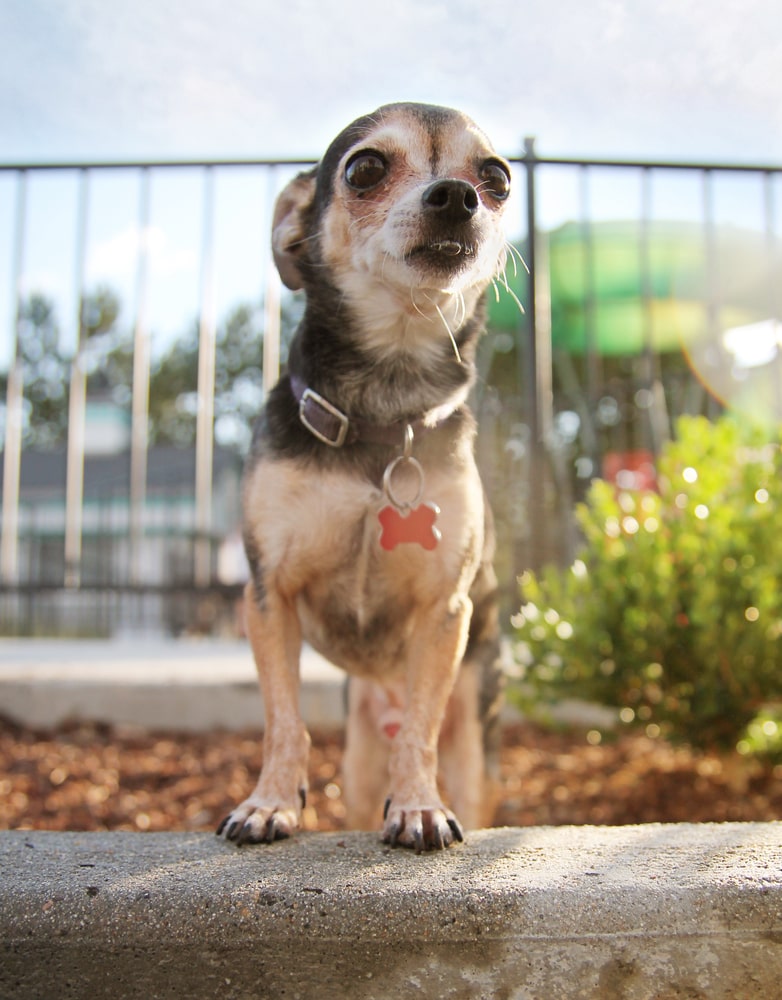
Rescue/Former Shelter Anxiety
Pets that have spent a period in a shelter often have memories of being abandoned and left there. They may also have experienced a traumatic event before they were taken into the shelter or while they were there.
These dogs may just be generally anxious because they dealt with an unpredictable routine or environment. Their general anxiety can also turn into separation anxiety because they fear they are being abandoned again.
Ways to Relieve Anxiety in Rescue Pets
Reducing anxiety in a former shelter dog requires patience and understanding. Give them plenty of love and attention, praise them for good or calm behavior, provide lots of physical affection such as petting, brushing, and playing with toys, keep a consistent routine during the day to build trust, and talk to them regularly in a soothing tone of voice.
Developing a consistent, predictable routine and environment is the best way to help these dogs feel safe at home. A behaviorist or trainer can also help pinpoint their trigger and recommend ways to help them calm down.
Products to Help Your Adopted Dog
-
P.L.A.Y. Build-a-Bed Hack for newly adopted pets: Towels and garments of YOURS (used, but not too stinky, so they have your scent, but aren't, ya know, gross) inside of a washable bed cover.
-
Patchwork Pet Soft and cuddly, yummy plushie toys will give your new nervous roomie something comforting to snuggle up with in their new bed.
-
Kong ZoomGroom Brush Treat your anxious dog to the ultimate spa day with this multi-use brush to help relieve stress and unwind.
-
VitalEssentials Minnows Freese-Dried Treats (or Wild Alaskan Salmon if the idea of holding a wee fishie in your fingers skeeves you out) Proper nutrition, exercise, and lots of positive reinforcement training can also go a long way in helping a shelter dog adjust to their new home -- and these treats are drool-inducing.
Social Anxiety
Dogs with social anxiety tend to display behaviors like barking, lunging, and aggression around new people or unknown pets. This anxiety often arises from insufficient socialization or traumatic social experiences in the dog's youth. The behavior is also known as "reactive," and the fear of the unknown is a significant contributor.
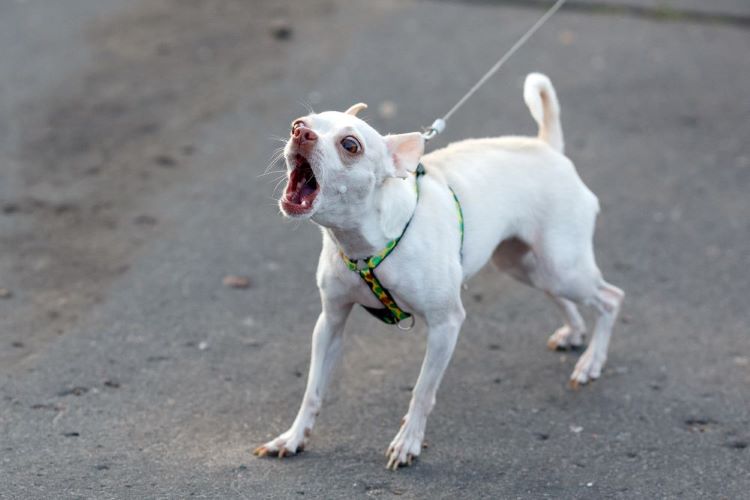
Dog parks, strange people (and sometimes just humans in general), and other animals might be big triggers of fear. These dogs remain vigilant for anything that might frighten them when they encounter new situations.
How to Treat Dog Anxiety Caused by Social Interactions
Treating anxiety in socially fearful dogs requires patience, consistency, and positive reinforcement training. The sooner you start, the better. The goal is to teach them that new situations are not necessarily dangerous.
Slow and steady wins this race, so don’t expect too much too soon. Gradual exposure is key. Start with slow introductions in low-stress environments. Reward calm behavior with treats or verbal praise and show your pup how much you value their cooperation. If they start to display anxious behavior, distract them with treats or toys.
Importance of Behavioral Modification & Training
It can be helpful to enroll your puppy in a positive reinforcement-based training program with an experienced instructor to learn proper behavior management strategies. However, sometimes being in public or around other dogs can be overwhelming for a reactive dog.
Private training options may be worth exploring in these cases. And you may eventually determine that the dog park just isn't in the cards for your doggo -- and that's okay! Find a calm place that feels safe for your furry friend to run and play alone with you.
Products to Help Reactive Dogs
-
GoodPup Speaking of private training...you can get personalized, affordable one-on-one virtual training through GoodPup's service. Get training sessions with experienced trainers that work with your schedule. (PetHub Basic+ members get 1 free week of training plus 10% off for life!)
-
SniffSpot Did you know you can rent someone's yard for a safe space that's private to help you minimize distractions or triggers and maximize time with your dog?
Illness-induced Anxiety
Anxiety and fear reactions in dogs can be caused by illness or disease. This type of anxiety usually comes on suddenly in a dog that was not normally anxious. Dogs with illness-induced anxiety may be sensitive to touch or noise, have night terrors, and seem scared of everyday objects.
The fear can also manifest itself as aggression towards family members and other pets in the home. Medication and other medical interventions may be necessary to help reduce anxiety and fear for your dog.
Common Causes
Senior dogs, in particular, are susceptible to behavioral problems caused by health issues, that left untreated, can trigger significant anxiety issues. Canine cognitive dysfunction syndrome, arthritis, thyroid conditions, and other age-related ailments can all create anxiety in a former chill doggo.

Veterinary Help is Needed for Illness-induced Anxiety
You might not understand the clinical signs of this type of anxiety -- but a medical professional will. If travel is a common trigger for creating anxiety for your fur kid, you might want to consider utilizing The Kinship to assess your stressed-out dog first.
Through virtual consultation with a veterinarian, you can eliminate the hassle of an in-person visit to the clinic for both you and your pet, especially if you suspect the ailment may not be serious enough to take your pet into the clinic (and it's usually much more affordable than an in-person veterinarian visit). Try The Kinship, which includes unlimited 24/7 on-demand access to chats with a licensed veterinarian. 

If directed during the virtual consult, or if you suspect an illness may be the root cause of your dog's behavior problems, in-person veterinary care is a must to observe and record clinical signs, run lab tests and diagnose any underlying medical problems that could cause this behavior, such as disease, physical injury or hormonal imbalances.
Once the underlying physical issue is identified, you'll start a treatment plan with your dog, which may include behavioral modifications. Your veterinarian may also suggest prescription medications or a medical professional, such as a veterinary behaviorist or certified trainer, who can help with behavior modification treatments for your dog.
Tools for Managing Anxiety for Dogs with Health Issues
Regardless of the root cause of this type of anxiety, every dog needs a quiet space to feel safe and secure. Providing your pup with a safe place to retreat during times of distress is key, like a dog crate or a safe space in your home that is just for them.
-
Petmate provides a selection of trusted and affordable crates with a wide variety to choose from.
-
Diggs crates are impeccably designed, easy to set up and move in minutes, and incredibly durable.
-
Chewy offers a variety of cozy cave beds in different price ranges. However, our top picks are the Snoozer orthopedic beds which not only provide a comfortable bed for your pet but also have a specially designed mattress to give extra support for dogs that experience achiness.
Generalized Anxiety
It is not always possible to determine the cause of canine anxiety. The primary event that triggered the anxiety could have gone unnoticed in the past or happened before your pet joined your family. Additionally, your dog may be naturally prone to anxiety and can become upset when there are changes to their routine or environment.
It's not uncommon for a dog to show signs of discomfort with loud noises that don't normally phase humans. Noise aversion is the most common symptom many pet owners notice in their fur kids. The vacuum cleaner, doorbell, and washing machine are a common nemesis in the house. Fireworks, thunderstorms, and traffic sounds are some of the most common causes of fear in animals of all species.
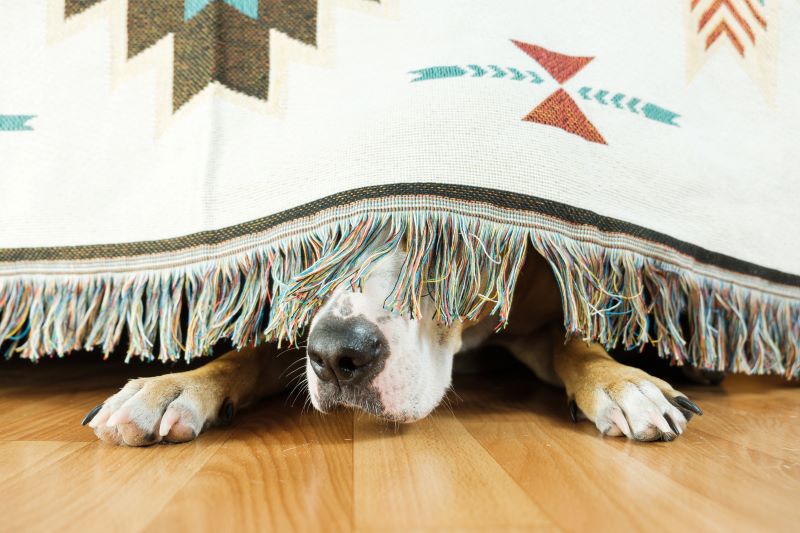
Generalized anxiety is a common condition that is often overlooked. The symptoms can be subtle and may not seem unusual. Sometimes, what is generalized anxiety is mistaken for a typical behavior of a certain breed when in reality, it is not necessarily a normal behavior.
Dog breeds prone to general anxiety:
- German & Australian Shepherd
- Labrador Retriever
- Vizsla
- Border Collie
- Shorthair Pointer
- Cocker Spaniel
- Bichon Frise
- King Charles Spaniel
- Greyhounds
- Havanese
- Many toy breeds
Developing a consistent schedule, controlling social interaction, reducing fear triggers, and creating a predictable environment with low stimuli is the best way to help a generally anxious dog.
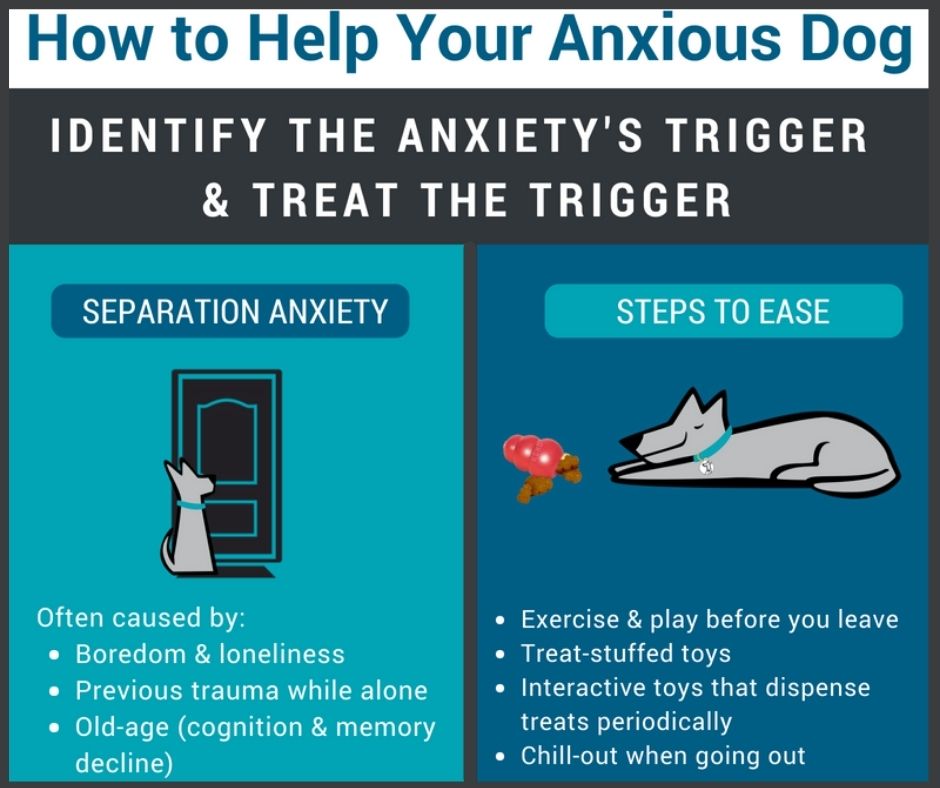
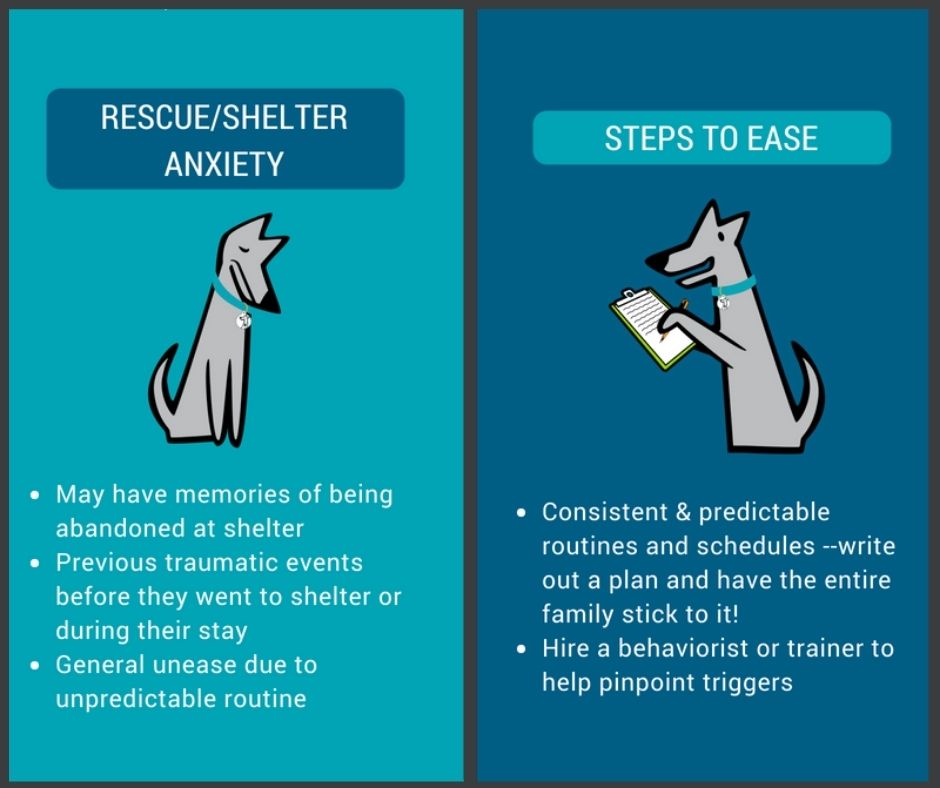
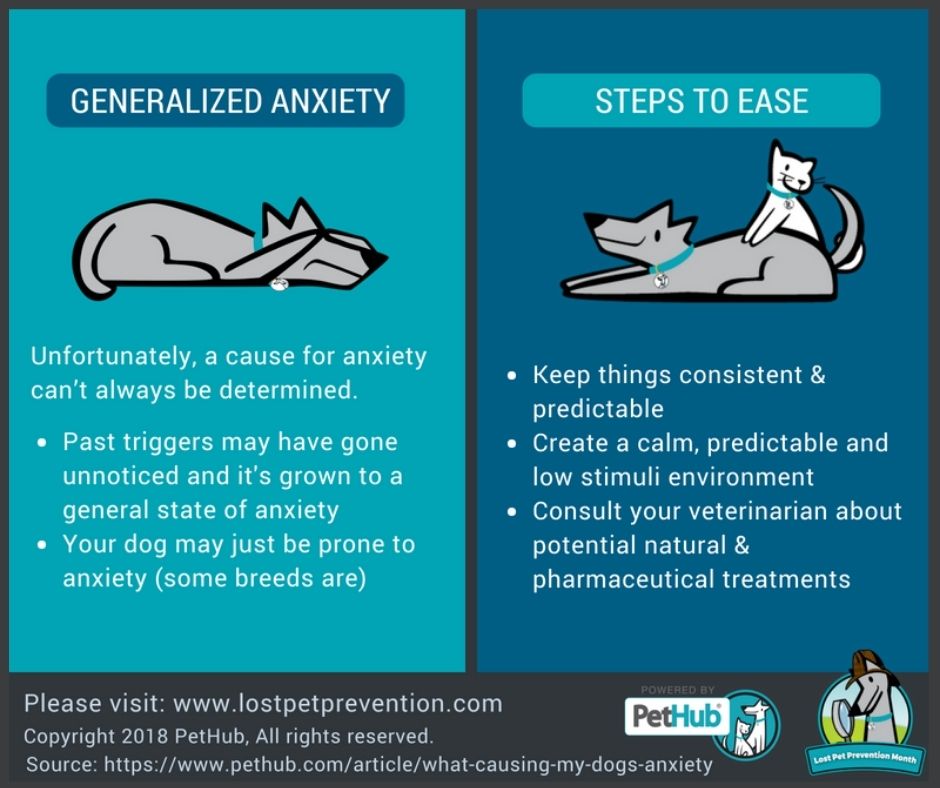
Other options to treat anxiety are treats, chews, or supplements that contain proven ingredients like chamomile, hemp seed oil, passion flower and melatonin. You may even want to explore how CBD or aromatherapy might help your pet's anxiety symptoms.
PetHub Tip? Check out Chewy’s Top-Rated Anxiety & Stress products for Dogs.
Dogs with anxiety may appear to be misbehaving, and may actually have some pretty darned annoying behavior. It is important to understand that these behaviors are a result of fear and insecurity.
The work you are doing now to identify and relieve your dog's anxiety will help create a calmer atmosphere for both you and your pup, so that you can enjoy each other's company more peacefully. Check out PetHub's other articles and resources about anxiety to learn more.


